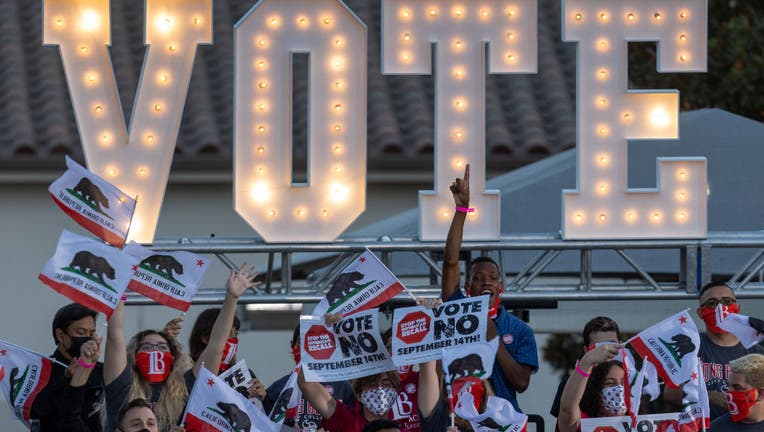Election Recap with subheaders

LONG BEACH, CA - SEPTEMBER 13: Supporters cheer for U.S. California Gov. Gavin Newsom who would later be joined by President Joe Biden to campaign to keep the governor in office at Long Beach City College on the eve of the last day of the special ele ( )
Philadelphia, PA - As of Monday morning, 19 House races were still uncalled, with Republicans only needing four more seats to keep the majority.
As of 7:30 a.m. ET, Democrats had 203 seats to Republicans’ 214. A party needs 218 seats for a majority.
H2 The biggest Election until the 2028 Election
What we know:
The 2024 election brought unprecedented voter turnout, with record-breaking participation across key demographics. The results were decisive in some regions but surprisingly close in others, underscoring a divided electorate. The major issues that influenced voters included economic concerns, healthcare reform, climate policy, and social justice. With a significant push from younger voters, the election set new benchmarks for civic engagement and digital campaigning.
What we don't know:
While we know the final vote counts, questions remain about the impact of misinformation and social media on voter behavior. Experts continue to analyze whether certain regions were swayed by misleading claims or partisan media narratives. Additionally, the role of early and mail-in voting is still under scrutiny, as data shows varying degrees of reliability in different states. Further investigation into these dynamics could reveal more about the nuances of voter influence in 2024.
Timeline:
Election Day took place on November 5, 2024, but early voting started weeks in advance, with millions of ballots cast by mail or in person. Results began trickling in on election night, though complete tallies took several days due to high mail-in voting numbers. By November 9, most major networks had projected winners in key races, and official certifications followed in mid-December. The swearing-in of new officials, including the presidential inauguration, occurred on January 20, 2025.
The backstory:
The 2024 election season was shaped by years of political division and economic upheaval. Rising inflation, the effects of climate disasters, and renewed social movements had voters demanding action. Additionally, new voting laws and redistricting shaped the landscape, with many predicting higher turnout due to easier access or greater barriers. Candidates adapted their platforms and outreach strategies in response to this changing landscape.
The other side:
The opposing candidates and their supporters focused on contrasting visions for the country. The losing side argued that issues like government overreach and personal freedoms were overlooked. They raised concerns about the potential economic impact of proposed policies and promised to hold the winners accountable through increased advocacy and legislative checks. This rivalry extended beyond individual candidates, reflecting broader ideological divides.
What they're saying:
Public reaction has been mixed, with some celebrating the results as a new chapter in American politics, while others voice frustration and disappointment. Political analysts note that while certain policies have gained traction, there is still resistance in some quarters. On social media, voters continue to debate issues like economic policies, foreign affairs, and the need for bipartisan cooperation moving forward.
Why you should care:
The outcomes of the 2024 election will likely impact policy areas crucial to everyday life, such as healthcare costs, energy prices, and education reform. For many, these changes will directly affect job opportunities, local economies, and environmental policies. Understanding this election’s results and implications can prepare citizens for the shifts to come and empower them to engage with elected officials on pressing issues.
By the numbers:
Voter turnout reached an all-time high, with over 160 million Americans casting ballots. Key states with tight races saw increases in turnout among young voters by over 30%. The winning presidential candidate secured around 52% of the popular vote and a decisive majority in the Electoral College, while control of the Senate shifted with a narrow margin of victory, affecting future legislative agendas.
Big picture view:
The 2024 election was a clear reflection of America’s current ideological and policy divides. Issues like healthcare, environmental policy, and social justice emerged as defining points for voters. Despite disagreements, there is an evident desire for unity and progress. Analysts suggest that this election may serve as a turning point, where leaders will either bridge gaps or deepen the divides.
Local perspective:
Local governments played a key role in facilitating voting access, with many counties extending early voting hours and providing multilingual resources. In battleground states, local issues like water access, disaster preparedness, and public school funding were major voter motivators. Interviews with residents show that community priorities sometimes differed from the national narrative, highlighting the unique needs of each locality.
What's next:
With the election results in place, new officeholders have a short window to implement their agendas. Voters are now focused on holding elected officials accountable, ensuring campaign promises translate into actionable policies. Congressional sessions will likely focus on immediate issues like inflation control, climate action, and healthcare reform, with many eyes on the administration’s first 100 days.
Dig deeper:
For those interested in a more detailed analysis of the election, resources like post-election polling data, issue-based voter breakdowns, and regional voting trends offer insights into the results. Think tanks, universities, and research organizations have published studies examining the effects of economic issues and social media on voter behavior. Historical comparisons to previous elections are also useful for understanding the shifts that occurred.
What you can do:
Citizens can get involved by staying informed, attending local government meetings, and engaging with elected representatives. Grassroots organizations are actively working on voter education and community initiatives. By joining advocacy groups or volunteering, individuals can influence how policies are implemented and help shape the political discourse in their communities.
Looking Ahead to 2026:
Can't wait for 2026, can you?!

